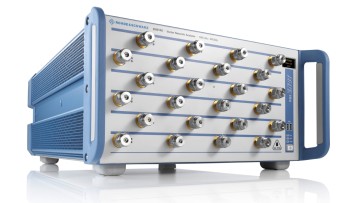The Telecommunications Industry Association has started up a new standards task group that aims to develop industry best practices for edge data centers.
The work will update TIA’s existing TIA-942 standard — which was developed with large, centralized data centers in mind — to include requirements and guidelines for the design and installation of smaller, more distributed edge computing locations that will support 5G. Compared to traditional data centers, TIA said, edge data centers “can be small installations located on a streetlight box” and “come with a different set of issues including cybersecurity, physical security, location, connectivity, and resilience.”
“5G will not reach its full potential without edge data centers,” said Harry Smeenk, TIA’s SVP of Technology Programs, in a statement. “The task group launched today will deliver reference architecture, guidelines, best practices and industry standards for this critical addition to telecommunications infrastructure.”
The group will be co-chaired by Cindy Montstream, director of technical support and training at Legrand and Johnathan Jew, president of J&M Consultants. TIA is seeking industry participation in the group.
In other test news:
–LG Uplus is using Anritsu‘s Network Master Pro MT1000A to support expansion of its 5G service and the necessary fronthaul and backhaul networks. Anritsu said that as part of its 5G roll-out, LG Uplus wanted a mobile network measurement instrument with a 100G interface; the test company also noted that the instrument supports eCPRI and IEEE’s 1914.2 Radio over Ethernet standards as well.
-Research by Future Market Insights forecasts a 12.5%-year-over-year growth rate this year for network testers, boosting a market which reached a value of $7 billion in 2018. The study says concludes that although most network tester sales are centered around qualification and certification testing, the segment will see “spectacular growth in adoption for troubleshooting applications.” In particular, Future Market Insights cited the increase in fiber deployments to the home and other premises as a driver for the network tester market.
–Rohde & Schwarz has introduced new vector network analyzers with a multi-port

architecture that can be used to test 5G antenna arrays. Rohde said that the new R&S ZNBT40 supports frequencies between 100 kHz to 40 GHz and claims that the analyzer is the first VNA with that range plus up to 24 integrated ports. It can be used for testing of active and passive components for multi-antenna systems, including radar, or for simultaneous parallel measurements on multiple devices under test in a production setting. The company also launched the ZNBT26 for measurements up to 26.5 GHz.during h
–Keysight Technologies‘ 5G network emulation solution is being used by ASUS Computers subsidiary Askey Computer to develop new 5G designs for millimeter wave. Askey, which focuses on electronic and network communications products, used Keysight’s tools in a recent demonstration of new 5G New Radio customer premise equipment for 5G fixed wireless access. The demo used both a CPE from Askey and a Qualcomm Snapdragon X50 modem.
Keysight also recently launched a new BenchVue software tool for lab management and control aimed at simplifying instrument management in engineering teaching labs; updated its PathWave advanced design system for 2019 with a double data rate memory simulation capability; and introduced a comprehensive receiver and transmitter offering for PCI Express 5.0.
With 5G wireless devices set to begin launching this year, Keysight noted, “the computer/server industry is actively working to upgrade and enhance network speed with advanced technologies such as 400G Ethernet” — which requires PCI Express 5.0 support, “as it is the only significant input/output (I/O) interconnect that has the throughput necessary to support the 400G interface.
“Designing integrated circuits and systems utilizing this version of the PCIe standard presents significant engineering challenges for developers,” Keysight added, explaining that because of the high data transfer rates, “PCIe 5.0 receivers must accept a heavily degraded signal resulting from the channel’s high-frequency loss characteristics, resulting in unacceptable bit error ratios.” PCI 5.0, it said, “utilizes aggressive equalization techniques helping the receiver restore the quality of the transmitted signal.”
Meanwhile, Keysight’s Ixia business unveiled a new software platform for managing multiple visibility solutions for wired, wireless and virtualized networks. Ixia said that the new Ixia Fabric Controller Centralized Manager can handle network packet brokers, taps, bypass switches, and cloud visibility solutions with a single graphical user interface.
–MTS reported fiscal first quarter results of $203.2 million, which reflected year-over-year growth in both the company’s test and simulation segment as well as its sensors business. Overall, revenues were up 4.6% from the same period last year. President and CEO Jeff Graves said that the company’s execution on its strategy to diversify and grow led to the quarter’s strong performance on that front. Net income was $10.5 million, down from the $33.1 million in profit reported at the same time last year. MTS reported a backlog of more than $500 million, which the company expects to fuel increased profitability this year.
MTS closed on its $80 million acquisition of simulation company E2M Technologies during the quarter as well.

